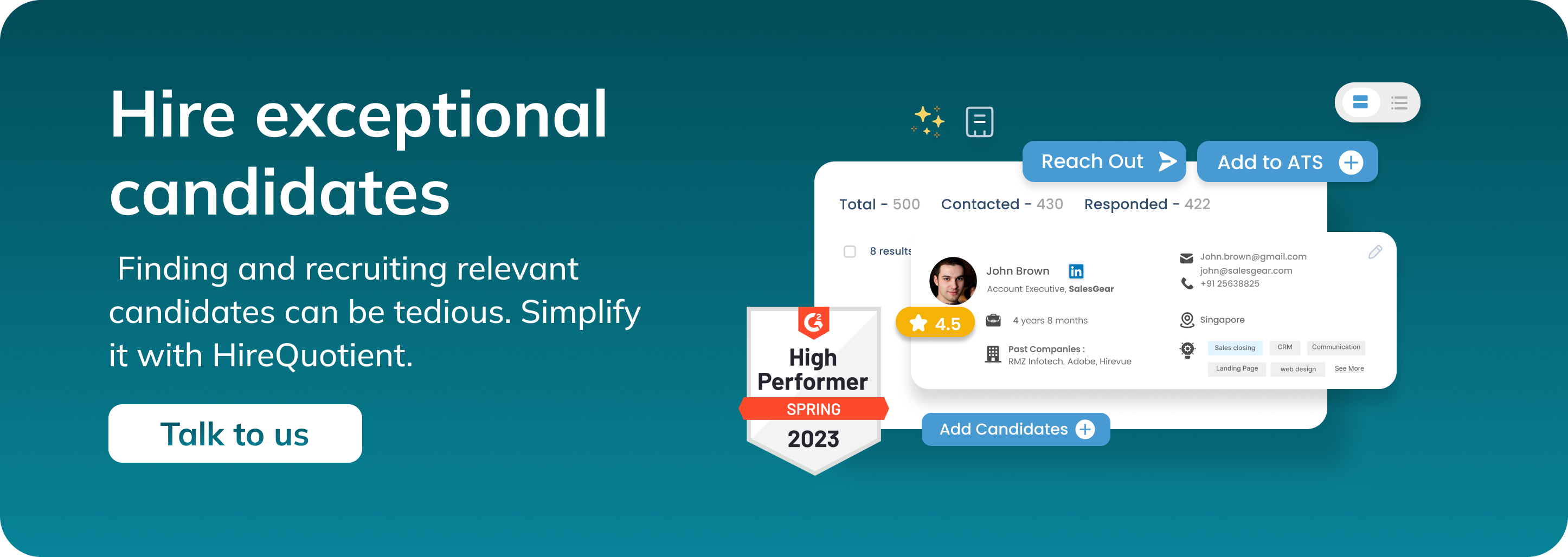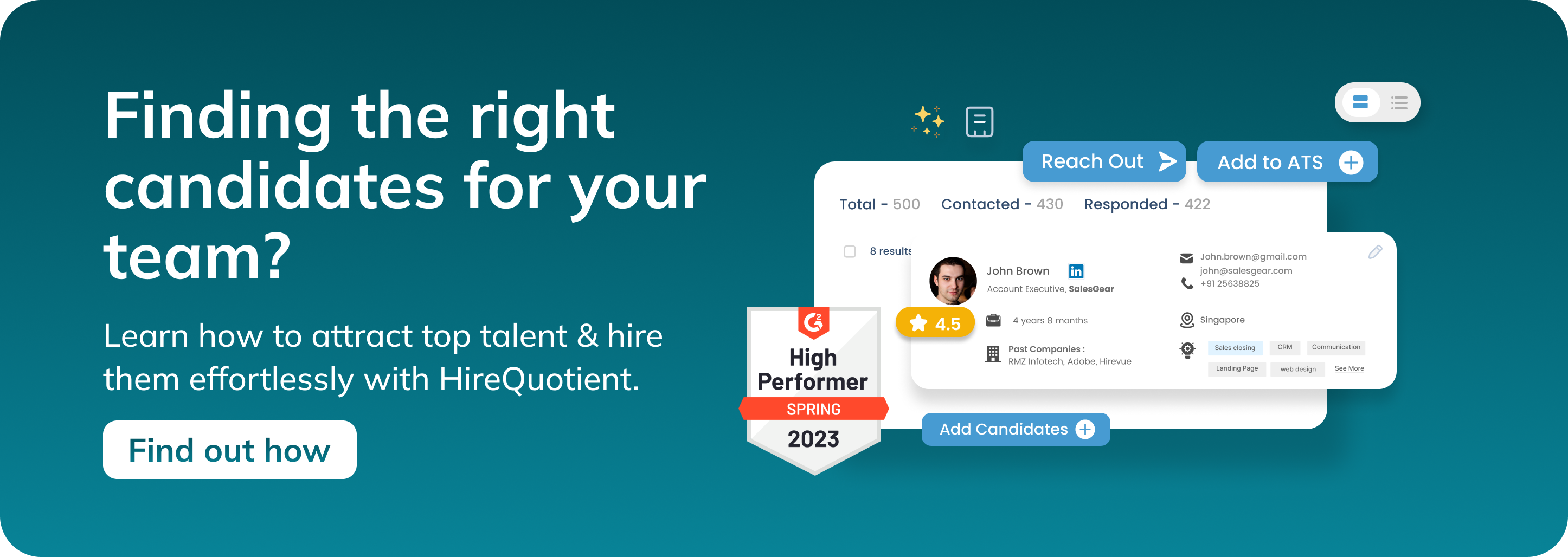What is Unregretted Attrition?
Published on April 30th, 2023
As recruiters, we all know that employee retention is a crucial element of any successful company. However, not all attrition is bad, and in some cases, losing certain employees can be beneficial for an organization - this is known as "unregretted attrition." But what exactly is this type of attrition, and how can recruiters identify it?
In this guide, we will dive into unregretted attrition and provide tips for how recruiters can leverage it to their advantage.
Defining Unregretted Attrition
Unregretted attrition refers to the departure of employees whose exit is not a significant loss to the organization. These employees typically have performance issues, are not a good fit for the company culture, or do not align with the organization's long-term goals. Unlike "regretted attrition," which is the loss of skilled employees who are valuable to the company, unregretted attrition is a positive event that can help companies improve overall productivity and morale.
Also read: What is Attrition Rate?
The Benefits of Unregretted Attrition
While losing employees is never ideal, unregretted attrition can provide several benefits for organizations. For example, it can create opportunities to bring in new talent with fresh ideas and perspectives. It can also improve teamwork and collaboration by removing negative or uncooperative individuals from the workplace. Additionally, it can help companies save money by not investing in employees who are unlikely to stay with the company long-term.
The benefits of unregretted attrition include:
Enhanced Productivity: When low-performing or unproductive employees leave, it can lead to increased productivity among the remaining workforce. The departure of individuals who weren't contributing their best can create a more focused and efficient team.
Improved Morale: Colleagues who were affected by the poor performance or negative behavior of departing employees often experience an improvement in morale. A more positive and collaborative work environment can emerge.
Cost Savings: Unregretted attrition can save the organization money in the long run. It avoids the costs associated with underperforming employees, such as training, development, or management efforts to address performance issues.
Opportunity for Talent Upgrade: The departure of low-performing individuals creates vacancies that can be filled by more capable and skilled talent. This can enhance the overall quality of the workforce.
Alignment with Organizational Goals: It allows the organization to refocus on its strategic objectives and align its workforce with its mission, vision, and values.
Identifying Unregretted Attrition
As a recruiter, it's essential to be able to identify employees who may be a good candidate for unregretted attrition. This can be done through performance evaluations, employee feedback, and tracking employee engagement levels.
Look for employees who consistently underperform fail to meet expectations, lack enthusiasm about their work, or are frequently absent or tardy.
Here are steps to help identify unregretted attrition:
Analyze Performance Metrics:
- Examine employee performance data, including key performance indicators (KPIs), appraisal ratings, and feedback from supervisors. Identify trends in performance that suggest underperformance or a lack of contribution to the organization's goals.
Review Employee Feedback:
- Collect and analyze feedback from managers and colleagues regarding the departing employee's performance, behavior, and contributions. Consistently negative feedback may indicate a lack of alignment with the organization.
Assess Behavior and Attitude:
- Consider any behavioral or attitude issues that might have negatively impacted the work environment. Frequent conflicts, disruptions, or a lack of collaboration can be indicative of unregretted attrition.
Evaluate Tenure and Advancement:
- Longer tenure without notable career progression or promotion may be a sign that the employee was not a strong contributor to the organization. Evaluate if the individual's skills and performance matched their time with the company.
Managing Unregretted Attrition
While unregretted attrition can be beneficial, recruiters need to manage the process in a professional and respectful manner. Be transparent with employees about their performance and provide opportunities for improvement.
Offer additional training or support to employees who may be struggling. And when necessary, have open and honest conversations about the potential for them to leave the company.
Leveraging Unregretted Attrition
Finally, recruiters can use unregretted attrition to their advantage by using it as a metric to measure overall success. Set targets for how many employees you want to see leave each year, and track whether or not those targets are being met. Use this information to gauge the effectiveness of your recruiting efforts and to make adjustments as needed.
How to Manage Attrition?
Minimizing attrition, or employee turnover, is a shared objective for organizations seeking to maintain a stable and productive workforce. One effective approach to reducing attrition is to address its root causes. A key aspect of this strategy involves sourcing the right individuals for the job.
By automating the candidate sourcing process, companies can experience a significant decrease in attrition rates. EasySource, an automated talent-sourcing, is designed to assist recruiters in locating and engaging with suitable candidates. With the added feature of embedded ChatGPT, recruiters can personalize their messages and identify talented individuals who are an ideal fit for their organization.
The introduction of EasySource could prove invaluable for organizations grappling with high attrition rates.
Here are steps to effectively manage unregretted attrition:
Identify Key Metrics:
- Begin by identifying the key performance metrics and behaviors that are essential for success in your organization. These metrics can vary by industry and job role. For instance, sales teams might focus on revenue targets, while IT teams might prioritize project completion.
Regular Performance Assessments:
- Conduct regular performance assessments to evaluate how employees are performing against these key metrics. Be transparent with employees about these expectations and provide ongoing feedback.
Individual Development Plans:
- Create individual development plans for employees who may be falling short in certain areas. Offer training, coaching, and resources to help them improve. This can include skill development, mentoring, or additional training programs.
Alignment with Company Values:
- Ensure that employees align with the company's values, culture, and vision. Employees who consistently demonstrate behaviors and attitudes that run counter to the company's principles may not be a good fit.
Objective Evaluation:
- Make attrition decisions based on objective evaluations of performance and behavior. Use data and performance metrics to identify underperforming employees. Avoid making attrition decisions based on personal bias.
Conclusion
While losing employees is never easy, unregretted attrition can be a valuable tool for recruiters looking to improve their organization's overall productivity, morale, and bottom line. By understanding what unregretted attrition is, identifying potentially problematic employees, managing the process professionally, and using the resulting data to make informed decisions, recruiters can leverage this type of attrition to their advantage and ultimately contribute to the long-term success of their organization.
Authors

Soujanya Varada
As a technical content writer and social media strategist, Soujanya develops and manages strategies at HireQuotient. With strong technical background and years of experience in content management, she looks for opportunities to flourish in the digital space. Soujanya is also a dance fanatic and believes in spreading light!
Hire the best without stress
Ask us how
Never Miss The Updates
We cover all recruitment, talent analytics, L&D, DEI, pre-employment, candidate screening, and hiring tools. Join our force & subscribe now!
Stay On Top Of Everything In HR



